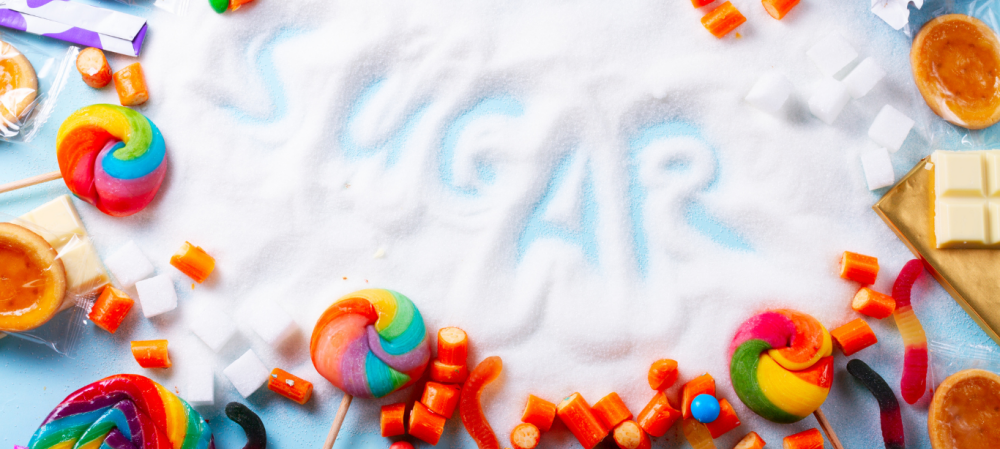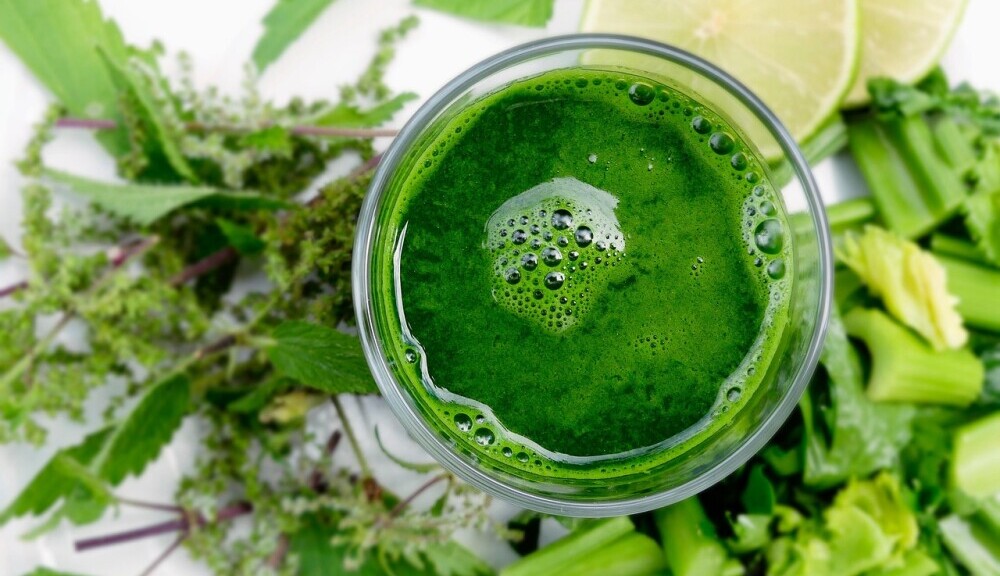 Sugar often feels impossible to resist because it taps into the brain’s reward system like a sweet-talking seducer. When you eat something sugary sweet, your brain releases dopamine, a chemical that lights up your brain’s pleasure centers. This is the same part of the brain that’s involved in drug addiction, making sugar a pretty powerful player in the addiction game.
Sugar often feels impossible to resist because it taps into the brain’s reward system like a sweet-talking seducer. When you eat something sugary sweet, your brain releases dopamine, a chemical that lights up your brain’s pleasure centers. This is the same part of the brain that’s involved in drug addiction, making sugar a pretty powerful player in the addiction game.
That heavenly feeling you get from a bite of chocolate isn’t just in your head — well, it is, but it’s also a lot bigger than that. Studies have shown that sugar can light up the brain’s pleasure centers even more intensely than some drugs. It’s wild to think sugar triggers a response so strong that it can make it hard for some people to kick the habit. Sugar Addiction Study
This cycle of consumption and pleasure creates a mental loop where the thought of sugar promises joy and satisfaction. Over time, this can reinforce the desire to grab that chocolate bar, not just for the taste but for the sheer happiness hit. It’s a pattern that’s tough to break because it feels so rewarding, pushing you to reach for that sugar fix time and again.
The Physiological Rollercoaster: The Body’s Reaction to Sugar
Ever notice that burst of energy after a sugary snack? That’s your blood sugar spiking, giving you a quick jolt that might feel like you can take on the world. But hold that thought—because soon enough, those energy levels start tanking. It’s like going from race car speed to a sputtering engine in no time at all.
This fast drop in blood sugar leaves you feeling tired, cranky, and craving more sugar. It’s a cruel cycle that makes it tough to focus on anything other than getting your next sweet fix. Sort of like trying to fill up a leaking bucket—a constant chase for more just to feel ‘normal’.
Navigating this sugar-fueled rollercoaster isn’t just physically exhausting. It plays into creating dependency. That quick energy boost from sugar gets really appealing when life’s got you on a tightrope of stress and fatigue. But leaning on sugar can actually make those low points even harder to deal with in the long run.
Breaking this cycle takes awareness and some practical steps. Balancing out how your body handles sugar hinges on eating regularly and opting for foods with a lower glycemic index. Whole grains, proteins, and good fats can keep those energy levels steady without the same dramatic spikes and drops. It’s like finding your cruise control after a rollercoaster ride.
The Hidden Dangers: Processed Foods and Artificial Additives
Processed foods are sneakily good at keeping us hooked. These foods are design-heavy on sugar, fat, and salt, a combo engineered to keep our taste buds dancing. This isn’t an accident—it’s food science at its best, or worst, depending on how you look at it. Manufacturers know exactly how to mix these ingredients to make foods that are just about impossible to resist.
Added sugars aren’t just in desserts. They hide in foods you wouldn’t even suspect, like salad dressings, pasta sauces, or even bread. This stealthy sugar sneaks its way into your diet more than you might think. And it’s those hidden sugars that can quickly add up, keeping that sugar craving alive and well.
Eating these ultra-processed foods has a way of derailing our dietary intentions. You might start the day with the best of intentions, but those engineered snacks play tricks on your brain, keeping you coming back for more. It’s this trap that makes processed foods tough to kick to the curb; the flavor, texture, and even the scent are things your brain starts to expect and crave.
Shaking free of these foods means getting savvy about what’s really in your pantry. Reading labels is key—be on the lookout for sneaky names that just mean sugar in a different form, like high fructose corn syrup or dextrose. Once you start cutting down on these, your taste buds will gradually adjust and those hidden sugars won’t have the same hold on you anymore.
Gut Health and Cravings: How Sugar Alters the Microbiome
The connection between sugar and gut bacteria runs deeper than you might expect. A diet high in sugar feeds harmful gut bacteria, giving them the fuel to thrive and upset the balance of your microbiome. This little ecosystem inside your gut plays a huge role in overall health, from your digestion to your mood.
When these bad bacteria get the upper hand, guess what? They want more sugar. This causes signals to be sent to your brain, nudging you to satisfy those cravings. It’s like having a sneaky sugar-loving guest in your house who keeps asking for more cookies—but for your gut!
Over time, this imbalance can mess with how your gut works and make you crave sugar even more. A gut pushing you towards sweets constantly isn’t just inconvenient—it’s an indicator that something’s up.
How do you restore balance? Well, diversifying your diet can be a great start. Load up on fiber-rich foods, like fruits, veggies, and whole grains, to nourish the good bacteria in your gut. Fermented foods like yogurt or sauerkraut also help by introducing beneficial probiotics. When your gut’s happy, those relentless sugar cravings might finally start quieting down.
Breaking Free: Strategies to Reduce Sugar Dependency
 Kicking a sugar habit might feel daunting, but it’s doable with the right game plan. The first step? Acknowledge that those cravings are real and withdrawal symptoms can creep in when you cut back. So, approach it just like you would any other change—with patience and persistence.
Kicking a sugar habit might feel daunting, but it’s doable with the right game plan. The first step? Acknowledge that those cravings are real and withdrawal symptoms can creep in when you cut back. So, approach it just like you would any other change—with patience and persistence.
Instead of kicking sugar cold turkey, try a gradual reduction. Swap out sugary snacks for healthier alternatives. Maybe ditch the sugary granola bars for a handful of nuts, fresh fruit, or a green smoothie. That way, you ease your way in rather than shocking your system.
Upping your protein and healthy fat intake can help keep you fuller longer, smoothing out those blood sugar spikes and crashes. Think avocados, nuts, and lean meats that give sustained energy without the sugar highs and lows.
Got a sugar craving that just won’t quit? Sometimes it’s about keeping busy. A quick walk, reading a book, or starting a new hobby can distract your mind and keep your hands busy until the craving passes.
Remember, once you start this journey, your taste buds will slowly adapt. Foods that once seemed bland can become delicious in their own right. This change won’t happen overnight, but with each little victory, you’re on your way to breaking free from sugar’s sweet grip for good.

Cheers From ChrisyLiz Health

I’ve definitely experienced the addictive nature of sugar firsthand. There was a time when I couldn’t go a day without having something sweet—whether it was a sugary coffee, a pastry, or just a handful of candy. The more I indulged, the more I craved it, and cutting back felt almost impossible.
What really helped me was gradually reducing my intake rather than quitting cold turkey. I started swapping out refined sugars for natural alternatives like fruits and honey, and I noticed my cravings became more manageable over time. Another big factor was being mindful of hidden sugars in processed foods—once I started reading labels, I realized just how much sugar I was unknowingly consuming.
It’s interesting how sugar affects people differently. Some seem to handle it in moderation without issues, while others, like me, find it incredibly hard to resist. Have you found any particular strategies that work well in managing sugar cravings?
Hi Laura,
Thank you so much for sharing your experience! I completely understand how challenging it can be to break free from sugar cravings—it’s a journey many of us have faced. I’m so glad to hear that gradually reducing your intake and being mindful of hidden sugars has helped. It’s incredible how much of a difference making small changes like swapping to natural alternatives can make!
As for strategies to manage sugar cravings, here’s what I’ve found works well for me and many others:
Having healthy snacks on hand – It’s so important to be prepared! I keep snacks like cut-up carrots, celery, and a mixed nut packs ready to go daily. These options are not only satisfying but also give you a boost of energy without the sugar crash.
Sticking to a meal plan – Creating a weekly meal menu and sticking to it can be a game-changer. When you plan ahead, you’re less likely to grab sugary snacks in moments of hunger. Knowing exactly what you’ll be eating and having it ready to go makes it easier to stay on track.
Staying hydrated – It might sound simple, but drinking plenty of water throughout the day can really help curb cravings. Sometimes our bodies confuse thirst with hunger, so staying hydrated can help prevent unnecessary sugar cravings and keep you feeling energized and satisfied
Everyone’s different, but these three strategies have been really helpful in managing my own cravings. I hope you find them useful! If you ever need more tips, I’m always happy to help.
Thanks again for your thoughtful comment! ????
-Good article on sugar!
-I agree that sugar can “disguise” itself as different names in what it’s contained in, such as artificial sweets and whatnot.
-It’s a good idea to make sure your diet also consists of whole grains and proteins in order to offset the big craving(s) that come with eating sugar so frequently.
-My experience right now is actually that I need to make sure that I’m drinking more water as opposed to just settling for any sugary drinks, even if they are refrigerated or something; water is very important in a diet.
-I like your suggestion of swapping out granola bars for nuts entirely until the taste buds adjust; smart idea.
-Best,
ALEJANDRO G.
Hi Alejandro,
Thank you so much for taking the time to share your thoughts, and I must sincerely apologize for my delayed reply. Your comment was thoughtful and spot-on, and I appreciate you engaging with the content.
You’re right that balancing your diet with proteins and whole grains is a key step in helping curb those intense sugar cravings. It gives your body the steady fuel it needs, rather than the rollercoaster energy sugar often causes.
I also love that you mentioned water. Staying hydrated plays a huge role in supporting our overall health, from aiding digestion and flushing out toxins to reducing false hunger signals, which can sometimes be mistaken for sugar cravings. Plus, water helps your organs (especially your liver and kidneys) process nutrients more effectively, which contributes to a healthier metabolism.
Thanks again, Alejandro. I value your input and hope your wellness journey is going strong!